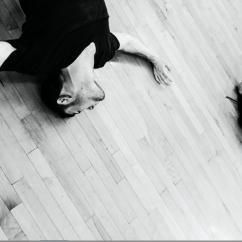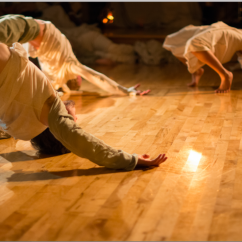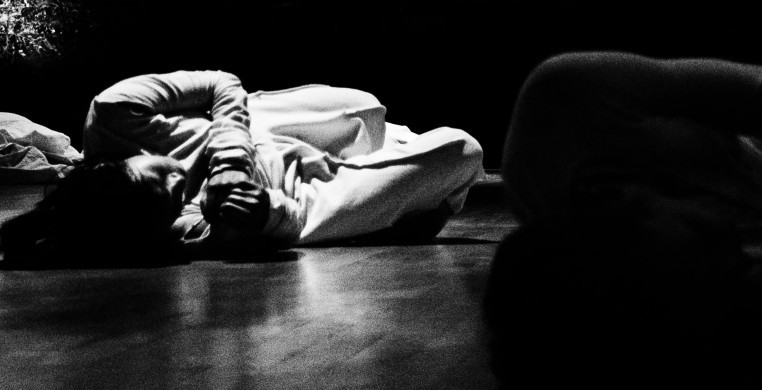It’s too easy to get lost in the grind. Day after day, deadline after deadline, we just keep going. We look for the next weekend, and then the next, often not recognizing when it gets unsustainable, or when something needs to change. A retreat is not a vacation, but a scaling back – a turning away from the front lines of a battle to regroup and start again.
When I opt into a retreat, I’m craving quiet reflection and solitude. Sometimes, I’m looking to plug into my spirituality, disconnect from technology, or convene with others. Usually, it’s about pressing the pause button on life for a moment, but preparing to retreat can be really stressful, and I felt a lot of anxiety leading up to my time at Khecari’s latest performative endeavor, “The Retreat: One week.”
I was running behind on, well, everything last Friday – behind on a number of deadlines and feeling nervous about relinquishing my electronic devices and giving up contact with the outside world. I’ve been struggling to balance the need for knowledge and an incessant barrage of news that has been seriously compromising my productivity.
I wasn’t ready when my assigned time for this long-form performance came along, and the cast and support team had already been going for 123 of their 168 scheduled hours of continuous performance when I finally entered a nondescript warehouse in Pilsen to find Enid Smith and John Jandernoa swaying back and forth on a gleaming maple floor that took up much of the space. One guest was moving with them – playing a follow-the-leader kind of game with the two dancers. Another lounged at the edge of the stage on a big, fluffy tuffet made of ecru muslin and pillows in white cases.

The space has some of the same elements as Khecari’s 12-hour “Retreat,” but the atmosphere felt quite different. Floor-to-ceiling fabric walls hid the logistics of this intricately planned operation. There are stacked cubes constructed of PVC pipes taped together in one corner of the room (I’m told that they’d been built throughout the week), and some fluffy air mattresses providing additional lounging possibilities in another. The room’s other two corners are occupied by composer Joe St. Charles and his buffet of musical possibilities, and a small tech table housing a light board. Frequently, both of these spaces are unoccupied, but the elements they control – sound and light – continue for all but a single hour each day, 4:00-5:00 a.m., when the whole space goes dark.
The room is vaster and colder than the cozy Indian Boundary Fieldhouse where the 12-hour version took place. On the upside: not once did I fear getting kicked in the face, as I did there, during the pinnacle of each day: a two-hour stretch of dancing – a more formalized concert within each 24-hour cycle of repeated elements.
There is a sense of arrival in this iteration of “The Retreat,” which began as a simple duet called “Orders from the Horse” by co-directors Jonathan Meyer and Julia Rae Antonick. It is the longest, most complicated, most elegant version of itself, and perhaps at the extreme ends of what is physically possible for the rotating cast of dancers. “Orders from the Horse” was created in an effort to dance from a sub-cortical, deep brain space, inviting involuntary movement and relinquishing conscious control of the body. The ensemble was added later, as was the element of fatigue and an invitation to the public to witness hours upon hours of improvisation.
Entering on Friday, the exhaustion was palpable, hanging heavy in the air and on the faces of some of the performers. This is, in part, why I came toward the end of the week: to see this work when it’s stale, laborious and tired – to see it in the moments when they might just be over the whole thing and seriously questioning the sanity of such an experiment.

It’s worth pointing out that very little of “The Retreat” is actually subconscious. Every detail is meticulously planned, and as the thing got longer and longer, it’s become more about us than it is about them. The evening show is carefully composed, with all the elements of a sound choreographic design present: motif, development, climax, and a cliff-hanger of bubbling regret taunting the guests who couldn’t stay the night – or who thought they wouldn’t want to.
For those who went for extended periods (from what I was told, the longest was about 48 hours), we were treated to meals, writing and drawing exercises, guided movement practice and two organized “concerts” each day. Guests entered and exited at scheduled times, so unlike the transient flow of patrons through a museum gallery, disruptions were deliberate, infrequent, and organized.
For me, the luckiest part of this experience, this time, was spending a night with just one other audience member. Our night was shared with three cast members (Precious Jennings, who slept over in advance of her 5am Saturday shift; Cristina Tadeo and Lauren Kunath), plus Sam Virgilio as our vigilant docent/watchperson/wake-up caller. As I stirred throughout the night and peeked my head out of a canvas pod placed atop a fluffy sleeping pad that we’d helped make together, I saw Kunath gently swaying – on her feet or upon her knees – through my hazy, sleepy eyes every time. I was only aware of the time as the sun began to beam through the skylights of the warehouse, and Jennings, transformed by Jeff Hancock’s drapey beige frocks, joined in a slow-motion, otherworldly procession of bent-over knuckle walking with Kunath, Tadeo, and Mary O’Rourke, who’d turned up some time while I slept in my cozy nest.
Lauren Warnecke is an arts writer and critic for the Chicago Tribune

